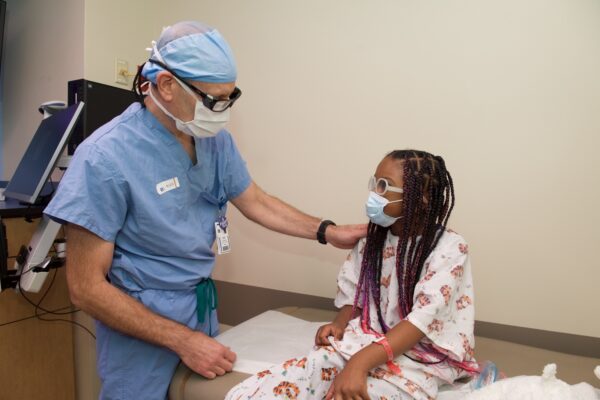
Dr. Mark Wulkan, chair of surgery
Enhanced Recovery After Surgery (ERAS) is a model of care that was first used in adult surgery. However, over the last four years, Akron Children’s has been pioneering these best practices in the surgical care of children to provide better pain control, shorter hospital stays, faster recoveries, fewer complications and greater patient satisfaction.
Using best practices in surgical care
“ERAS uses best practices in perioperative care. We are doing some new things, such as offering clear fluids two hours before surgery to prevent dehydration and getting patients up and moving much sooner after surgery. We’re also avoiding things we’ve done in the past, such as nasogastric tubes, Foley catheters and withholding food after surgery,” said Dr. Scott Boulanger, director of pediatric general surgery.
ERAS began in adults with colorectal and gallbladder surgeries. Akron Children’s first tailored ERAS protocols to these procedures in children and has been tracking outcomes. This includes length of hospital stay, patient’s readiness to go home, pain control, time to eat after surgery, readmissions, and patient family satisfaction, which have all demonstrated positive outcomes. Dr. Boulanger noted that length of hospital stay has been significantly reduced for these procedures.
“The typical length of stay for colorectal surgery is 3 to 4 days, but can be as long as 5 to 6 days. Now it’s 2 to 3 days,” he said. “For gallbladder surgery, it was a 2- to 3-day hospital stay, but now these patients are ready to go home the same day.”
“Patient education before surgery is important to set expectations,” said Kelly Bystricky, a physician assistant in pediatric general surgery. “Often patient families will remember that years ago a family member had the same procedure and it was a difficult recovery process. Their biggest concern is their child will be in pain, but once they see how well their child is doing after surgery, we really exceed their expectations.”
Improving pain control without narcotics
Our anesthesiologists have been champions for ERAS, implementing advanced, ultrasound-guided, peripheral nerve blocks, often referred to as regional anesthesia, while the patient is under general anesthesia.
“With these nerve blocks, we inject a mix of long-acting local anesthetics and additives, such as steroids, to optimize pain control after surgery,” said Dr. Rami Karroum, pediatric anesthesiologist.
In addition to regional anesthesia, other non-opioid pain medications are used to help manage pain.
“Along with better pain control, we’re able to significantly reduce the usage of narcotics and their side effects, such as nausea, vomiting, constipation, abdominal pain and itching. This is particularly important in this era of an opioid crisis,” said Dr. Karroum.
Because patients come out of surgery less drowsy and more comfortable, they’re able to get out of bed and start moving much more quickly, usually 90 minutes after surgery.
“Patients are able to drink, move and eat much sooner after surgery, which means they can be discharged to go home sooner,” said Bystricky. 
Tailoring ERAS principles to other surgical procedures
As Akron Children’s continues to develop the ERAS model of surgical care, protocols are being tailored for other procedures, including thyroid, adolescent GYN and non-elective/emergency surgeries. Akron Children’s urologists are exploring the use of ERAS. Our orthopedic surgeons have successfully implemented a spine pathway that uses many of these protocols to reduce the hospital stay and enhance the recovery of scoliosis surgery patients.
Future efforts are also exploring ways to further enhance outcomes in colorectal and bariatric surgeries, so patients can go home the same day.
“As one of the few children’s hospitals in the country to extensively use ERAS, we are documenting that this is clearly an effective way to take care of patients with reduced use of narcotics, shorter lengths of stay and no return visits to the ER for complications. There is also a high degree of patient and parent satisfaction,” said Dr. Boulanger.










